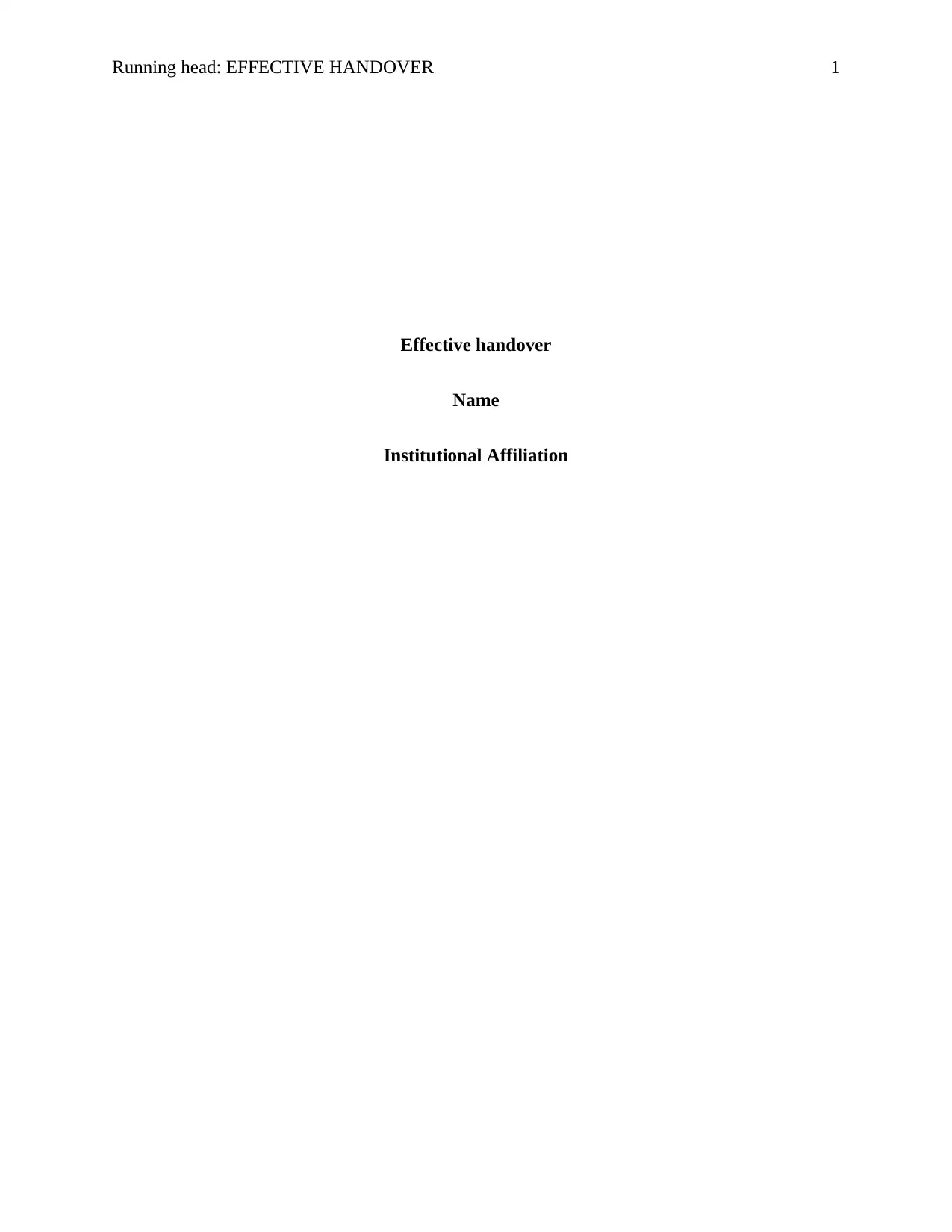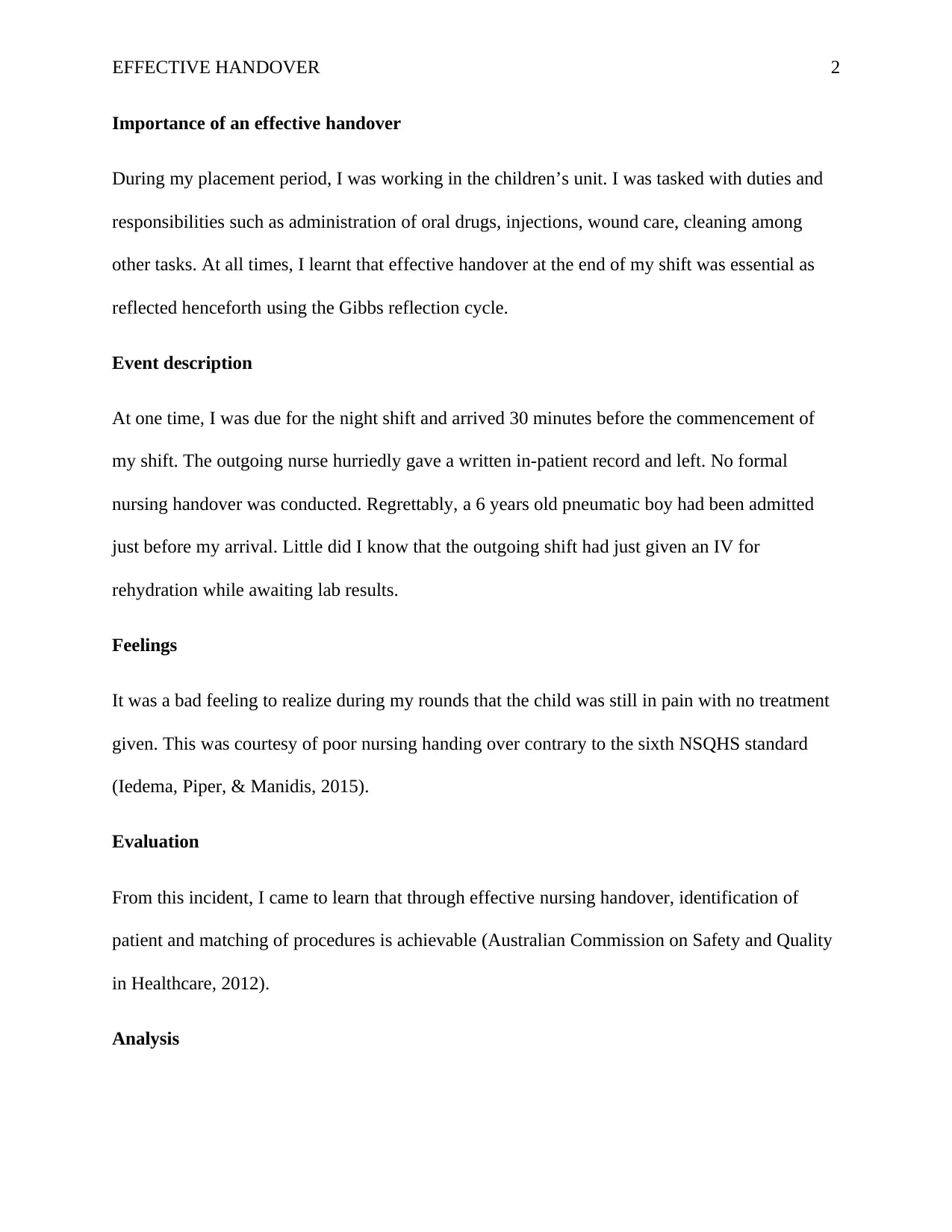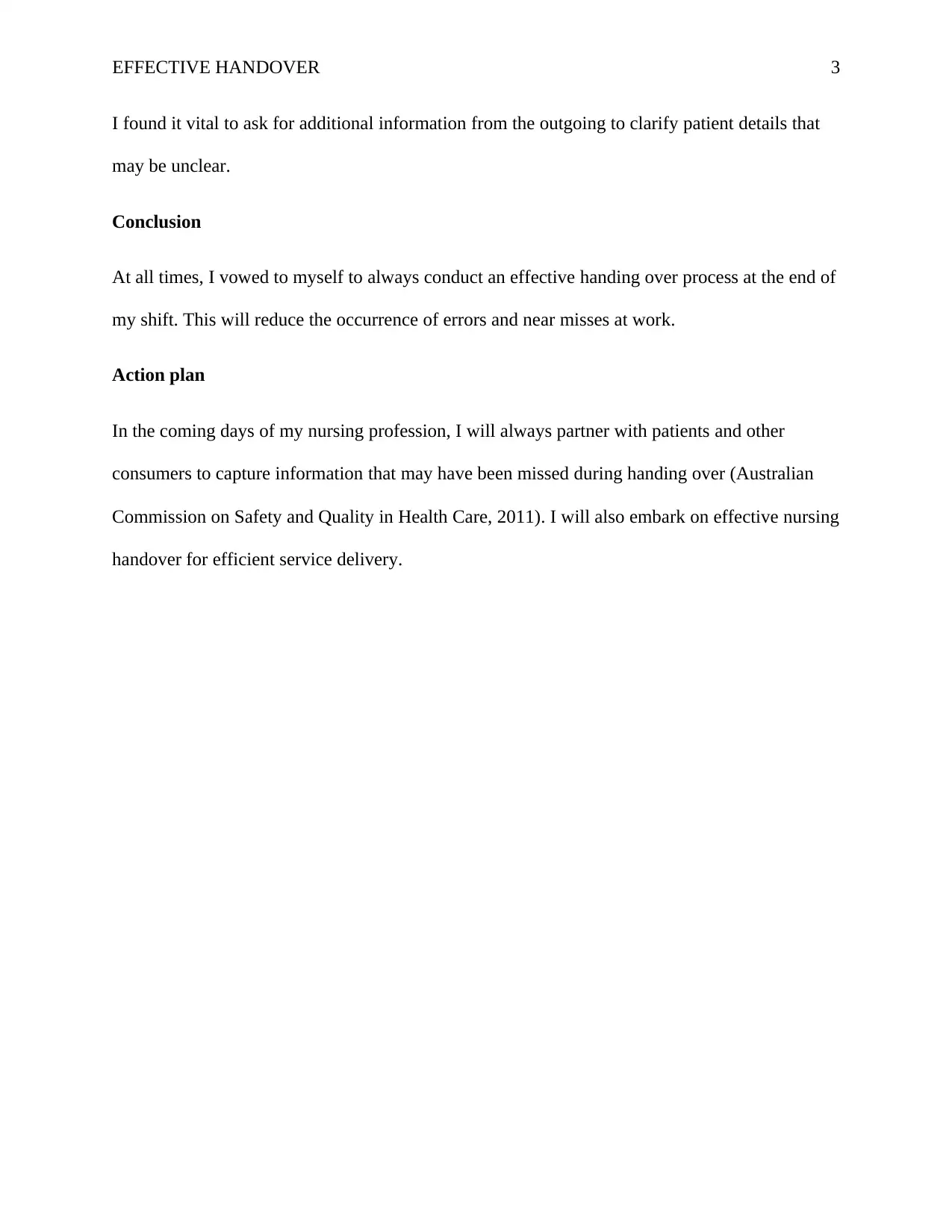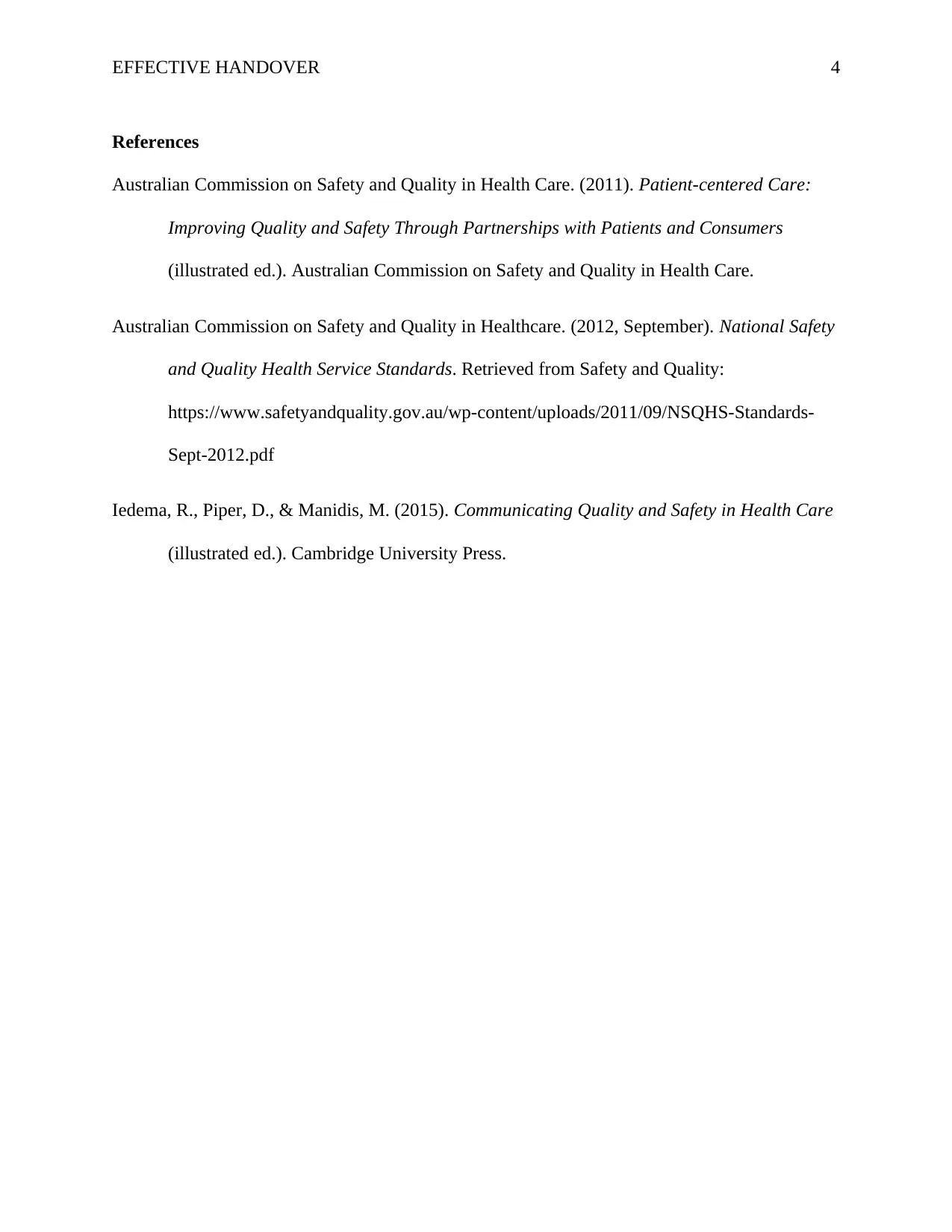Report on Effective Handover in Nursing: Patient Safety Focus
VerifiedAdded on 2023/04/06
|4
|407
|108
Report
AI Summary
This report analyzes the importance of effective handover in nursing, focusing on patient safety and quality of care. The report begins by describing a real-life incident where a lack of proper handover led to a patient's delayed treatment. The author uses the Gibbs reflective cycle to analyze the situation, evaluating the incident, and drawing conclusions. The analysis highlights the significance of clear communication, accurate information transfer, and the role of handover in preventing errors. The report references relevant literature and standards, including the National Safety and Quality Health Service Standards. Finally, the report concludes with an action plan for future practice, emphasizing the importance of patient involvement and effective communication to improve patient outcomes and ensure safe and efficient service delivery. The report is a valuable resource for healthcare professionals seeking to improve their handover practices.
1 out of 4











![[object Object]](/_next/static/media/star-bottom.7253800d.svg)